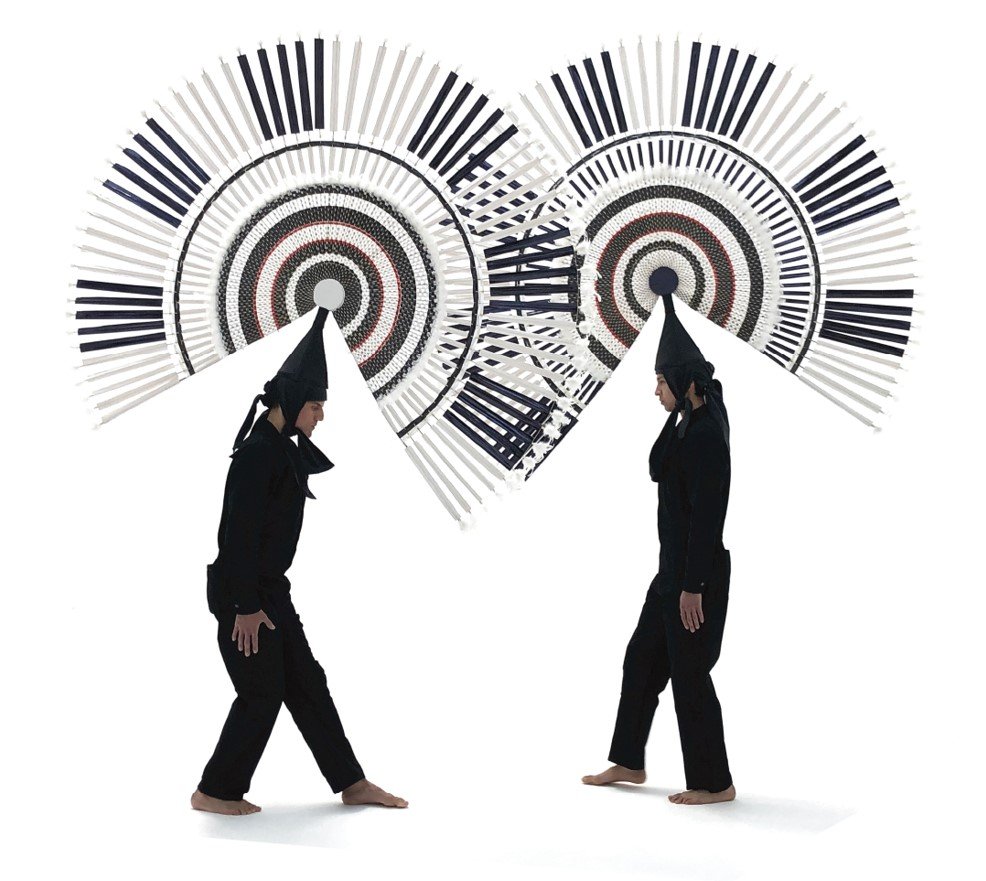Tania Candiani: Reverencia
March 29 - August 6, 2023
By Gabriela Urtiaga, Chief Curator, MOLAA
Tania Candiani (Mexico, 1974)
Reverence / Reverencia, 2019
Single channel HD video. Color and sound.
6:08 minutes
MOLAA Collection. Courtesy of the artist and Instituto de Visión. / Colección permanente de MOLAA. Donación de la artista y el Instituto de Visión.
A choreographic action that reinterprets the Dance of the Quetzals, one of the few ceremonial dances that survived the evangelization of Mesoamerica and is still performed in the Nahua-Totonaca region. This piece provides a synthesis of the dance, eliminating its bright colors and festive movements, instead centering on the greeting to the four cardinal directions and the essential gesture of respect and gratitude underlying the reverence performed by the two dancers. Of the original colors of the headdresses, only the white, black and one red line have been preserved, alluding to blood and life. Reverence is based on the narrative, symbolic and acoustic contents of traditional Mexican dances, filmed and translated into new choreographies. This piece responds to an interest in the conservation of cultural memory through the recuperation and reinterpretation of traditions, rituals, materials, and clothing.
Tania Candiani (Mexico, 1974)
Tania Candiani was born in Mexico City. Candiani works in a variety of media and practices at the crossroads of different languages systems, including phonic, graphic, linguistic, symbolic, and technological. The translation across distinct systems of representation is essential in the creation of her work. She received a Guggenheim Fellowship for the Arts (2011), a National System of Art Creators in Mexico Fellowship (2012-2014; 2017-2019), and an Artist Research Fellowship from the Smithsonian Institution (2018). Candiani represented Mexico at the 56th International Venice Biennial in 2015. Her work has been exhibited in museums, institutions, and independent spaces around the world and is part of important public and private collections, including the Museum of Latin American Art, Los Angeles, US; San Diego Museum of Art, San Diego, US; among many others.


